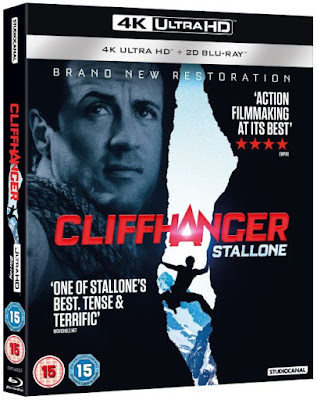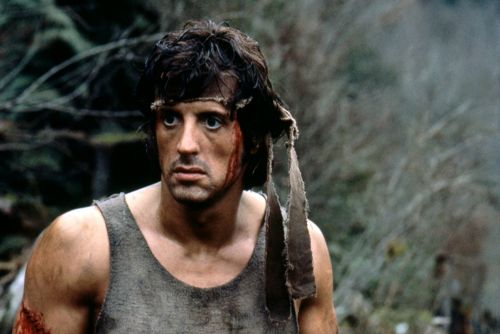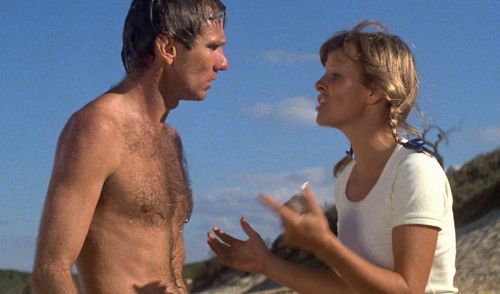Voice cast: Craig T. Nelson, Holly Hunter, and Sarah
Vowell
Director: Brad Bird
118 minutes (PG) 2018
Disney Pixar Blu-ray region B
[Released 19th November]
Rating: 8/10
Review by J.C. Hartley
Alongside my genuine enjoyment of The Incredibles (2004), I was a little
bit surprised that Marvel, or at least Stan Lee, weren’t immediately on the
phone to their legal representatives. Smilin’ Stan was famously litigious when
he thought his intellectual property rights were being appropriated, summoning
his lawyers as often as Dr Strange invoked the Hoary Hosts of Hoggoth.
Incredibles writer-director Brad Bird, while conceding the film was a
celebration of 1960s comic-book heroes, nevertheless claimed the only comic he
was aware of was Watchmen (1987), and
that the Parr family’s powers were derived from family archetypes, rather than
what he described as the well-trodden turf of existing super characters. With a
super-strong character, an elastic-limbed character, an invisible girl, a
youthful speedster, and a kid who can burst into flame while manifesting a
demonic alter-ego, the Parrs pay more than a passing resemblance to Marvel’s first
family, the Fantastic Four. They even have a best friend who can control
moisture and temperature, and come up against an ersatz Mole Man in the first
picture’s final frames.
In the world of The Incredibles superheroes are
proscribed, after lawsuits arising from damage to life and limb arising from
their activities, a context not a million miles removed from that of the
aforesaid Watchmen, and Frank
Miller’s The Dark Knight Returns
(1986). It’s true that there are probably only so many super-abilities or
characteristics that can be employed in comics without it getting ridiculous,
as Chris Claremont proved when he populated the world with some of the most
inane mutants imaginable. It may be that Brad Bird’s own superpower is the
ability to avoid costly lawsuits by a display of disingenuity, but for a guy
who claimed only a passing familiarity with comic-book tropes he seemed to have
placed his feet very precisely in the prints left by others on that
well-trodden turf.
That’s not to say I didn’t thoroughly enjoy the
first picture, and let’s face it, two years after The Incredibles appeared their production company Pixar belonged to
Disney, and three years later so did Marvel, so all’s well that ends well. A
final thought on intellectual property, a couple of years ago I went into an
art gallery on Manchester’s Deansgate to look at some pictures by Bob Dylan,
and found the walls hung with massive prints of comic-art by Jack Kirby, all
bearing the signature of Stan ‘The Man’ Lee. The proprietor concerned explained
that the Stan Lee signature was some form of authentication statement, and that
Lee’s name was probably better-known than Kirby. Poor old Jack.
This latest adventure in what one fears may be a
franchise, opens as the last one ended, with the attack by the Underminer after
a school sports day attended by Bob and Helen Parr and their kids Violet, Dash
and Jack-Jack. The Incredibles respond, but the Underminer manages to rob a
bank and escape, while his out-of-control burrowing machine causes major damage
to the city. The positive future for superheroes that seemed in prospect at the
end of the last film, is instantly reversed. The Parrs are out of work and
living in a motel, and their ally in the state department is retiring, but only
after wiping the memory of invisible girl Violet’s new boyfriend, because he
saw her unmasked, and consequently now doesn’t know who she is. Along with
their super-friend Frozone, Bob and Helen are invited to meet superhero
advocates Winston and Evelyn Deavor, who plan to use the resources of their
high-end communications empire to improve the public image of super-types, and
get the law changed to bring them back.
The Deavors’ father, a great supporter of superheroes, was killed by
intruders while ringing for help on a hotline, the day super vigilantes were
banned.
The Deavors’ propose that Helen operates outside
the law as Elastigirl, broadcasting on a miniature camera invented by technical
whizz Evelyn, to show the public how superheroes risk their lives fighting
crime and protecting society. While Bob stays at home as a house-husband,
Elastigirl immediately comes up against a new foe the Screen Slaver, who uses a
mastery of video networks to hypnotise the public into performing acts of
terrorism.
I won’t pretend it isn’t pretty obvious who the
villain turns out to be. Anyone who saw the first film will experience a
curious sense of déjà vu, in that Mr Incredible was conned into furthering the
plans of a hidden villain with superhero issues, and the same thing happens
here, only with Mr Incredible’s spouse playing the patsy. Similarly, while the
major disaster that the heroes managed to avert in the first film was
technically of their own making, so it is here. Maybe Brad Bird, given his
claimed distance from the genre, is being meta, or maybe he’s just rewritten
his original story because he ran out of ideas. So, why the 8/10 rating?
Once it gets going the film is pleasantly
entertaining, and at my age that’s pretty much all I ask for now. Having said
that, it takes a bit of time to get going. The early scenes of discord between
Helen and Bob may be Brad Bird’s attempt to inject the new realism that Stan
Lee brought to comics into the animated medium, but it’s a tough call to care
about pixels having a ‘domestic’ when the scene drags as much as this one
does. Similarly, the exposition of
Winston Deavor’s master-plan to rehabilitate supers is also a bit flat. But the
action sequences are great, and while the comedy isn’t laugh-out-loud it does
mean you end up watching with a smile never far from your face.
The disc contains an package of extras. Bao (2018) is an animated short by
Chinese-Canadian artist and director Domee Shi, in which a steamed dumpling
fulfils the role of a housewife’s absent grown-up son. I loved writing that
description. Auntie Edna is another
short in which we see a missing sequence from the main feature. Mr Incredible
drops off baby Jack-Jack with Edna Mode, costume designer to the superhero
community, and she spends the evening researching the infant’s abilities.
‘Strong Coffee: a lesson in animation with Brad Bird’, is a short featurette in
which various talking heads discuss the director’s working methods, and offers
a fascinating insight into Bird’s own time with Disney. There is an opportunity
to watch the movie with commentary, which is again particularly valuable as an
introduction to the whole animation process, and as an encouragement to watch
more closely what is being achieved on the screen. Finally, the extras include
a ‘sneak peek’ trailer for the new Mary
Poppins Returns (2018).
In the early paragraphs of this review I may have
given the impression that I thought Stan Lee was too fond of wielding his
considerable reputation for pecuniary advantage, which wasn’t my intention at
all. Before I began writing this it was announced that Stan had died, and
inevitably there has been much media reflection on his amazing career. Within a decade Lee, helped by Kirby, and
Ditko, Bill Everett, and John Romita Sr, and others, transformed comic-books,
and pop culture, and I suspect that Lee’s influence seeped into Brad Bird’s
consciousness by osmosis, without him realising. Nearly half a century after
the Marvel Universe Big Bang cinema technology had developed sufficiently to
start doing that creativity justice. I was lucky enough as a kid in the 1960s
to experience that creative explosion at first-hand and, as someone who read
everything, I relished Stan’s footnotes, his funny asides, his Bullpen notes,
even the previews of up-coming comics. Most of all I loved the fact that this
was a coherent connected universe, that one could imagine existing just
slightly at a tangent to the real world.
People still struggle today to convince doubters
that comics can be an intelligent, literary, medium, and yet back in the 1960s
I had no doubt. Interestingly, something that comes out of the featurette
‘Strong Coffee’ on this disc, is Brad Bird’s insistence that animation is
serious film-making. When the superhero films came along, and special effects
started realising in widescreen what for me had always been a widescreen
experience, I found that while the spectacle was often amazing, it still came
second to seeing a glossy day-glo cover, and opening up a comic to become
absorbed in the world inside. What the advances in the ‘3D’ animation produced
by Pixar emphasise, is how it is still story-telling that matters, otherwise
the ‘flat’ ‘2-D’ animations with which Disney made their name would never have
achieved their classic status. Despite every sense telling us that what we
read, and what we see, is patently unreal, we are absorbed in the moment.





































